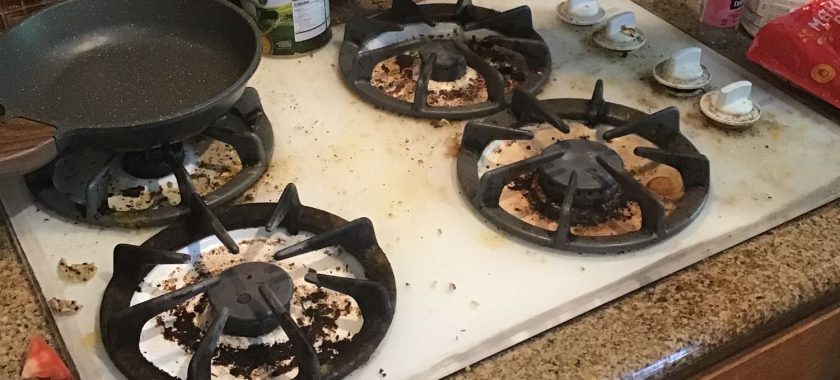Modern cooktops offer convenience and precision—but when a burner begins to overheat or stops responding to temperature changes, it can lead to frustration, unsafe cooking, or even fire hazards. If your cooktop burner refuses to cool down or heats up erratically, you’re likely dealing with an internal malfunction. Let’s explore the most common causes and what steps to take next.
1. Faulty Thermostat or Sensor
Most electric and induction cooktops are equipped with thermostats or temperature sensors that regulate heat output. These components detect the burner’s surface temperature and signal the cooktop to adjust power levels accordingly.
Symptoms of a thermostat issue:
- The burner remains extremely hot even when turned to a low setting.
- There’s no noticeable difference between medium and high heat.
- The burner cycles on and off at inappropriate intervals.
When the thermostat malfunctions, it may not communicate the correct temperature to the control board, resulting in dangerous overheating or inadequate heating. Replacing the thermostat or associated sensor is often necessary in such cases.
2. Malfunctioning Infinite Switch (For Electric Cooktops)
The infinite switch regulates how much power flows to a coil-type burner. It’s responsible for adjusting the heat based on the setting you choose.
Common signs of a defective switch:
- The burner is always on full heat regardless of setting.
- No response when turning the control knob.
- Inconsistent or flickering heat.
Over time, the electrical contacts inside the switch can degrade or burn out, causing it to get “stuck” in the ON position or fail entirely. If this switch fails, it must be replaced to restore safe, responsive control of your cooktop.
3. Faulty Control Module or Electronic Control Board
Many modern cooktops, especially those with touch controls or digital displays, rely on an electronic control board (PCB) to manage all burner functions. This board acts as the brain of your appliance.
Indicators of control board problems:
- Multiple burners misbehave or ignore temperature changes.
- Display errors or unresponsive touch controls.
- Delayed or no response after adjusting settings.
Damage from power surges, internal wear, or moisture intrusion can cause the control board to malfunction. Diagnosing issues at this level requires expertise, as multiple components could be affected. Often, the entire module needs replacement.
4. Wiring Issues or Electrical Faults
Sometimes, it’s not the burner or its controls that are faulty, but the wiring that connects them. Frayed wires, loose terminals, or corroded connections can cause irregular performance, intermittent heat, or complete failure of temperature regulation.
Look out for:
- Burn marks or electrical smells.
- Heat fluctuating without touching controls.
- Burners turning on/off randomly.
These issues can be dangerous, leading to short circuits or electrical fires. It’s crucial to turn off the power supply and call a qualified technician immediately if you suspect faulty wiring.
5. Burner Element or Induction Coil Defects
The problem might also lie directly in the burner itself. In electric models, the coil element can warp, crack, or suffer internal damage. In induction models, the magnetic coil may develop faults that interfere with proper heat transfer.
Possible signs:
- Uneven heating across the surface.
- Burner doesn’t heat up at all or gets too hot.
- Cracking or popping noises from the burner area.
In such cases, replacing the defective burner is often the most efficient solution.
What You Should Not Do
When your cooktop misbehaves, it’s tempting to troubleshoot aggressively—resetting the breaker, disassembling controls, or continuing to cook “just one more time.” These actions may make the problem worse and increase safety risks.
Avoid:
- Continuing to use the burner until diagnosed.
- Performing DIY electrical repairs without experience.
- Ignoring error codes or warning signs.
Professional Diagnosis Is Key
If your cooktop burner is overheating or not responding to temperature changes, the issue is almost always rooted in internal components or electrical systems. Most of these problems are not visible from the outside and require specific diagnostic tools.
Don’t take chances with your appliance—or your safety. A certified technician can quickly identify the faulty part, order the correct replacement, and ensure everything is safely restored.
Trust the Experts at Chula Vista Appliance Repair Company
When your cooktop stops cooperating, Chula Vista Appliance Repair Company is here to help. Our skilled technicians are trained to handle all major brands and models. Whether it’s a faulty thermostat, broken switch, or damaged control board, we provide quick, reliable, and affordable service to get your kitchen running smoothly again.
Call us today to schedule a professional inspection and repair. Don’t risk fire or damage—get your cooktop back under control with Chula Vista Appliance Repair Company.
Contact us
(619) 880-5508


